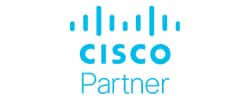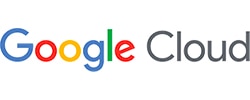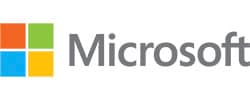May 23, 2024
How Clinical Workflow Optimization Creates Better Patient Outcomes
Effective use of technology helps providers deliver better care at a lower cost.
Healthcare organizations employ skilled and dedicated workforces, but they are often challenged by legacy processes and antiquated technology. IT and clinical leaders may focus on people, process and technology to optimize their capabilities and overcome issues around costs, workforce shortages, clinical burnout and inefficient processes. By optimizing their existing IT investments, healthcare providers can streamline their clinical and operational procedures. This can significantly improve efficiency and help them get more from their various IT solutions.
Integration is a key objective of optimization efforts. The effective integration of systems such as electronic health records (EHRs), collaboration platforms, patient management tools and point-of-care solutions can improve workflows and ensure that all clinicians have the data necessary to provide the care their patients need.
As they endeavor to optimize their workflows, healthcare organizations should prioritize several key factors in their strategies, including patient safety, security and privacy, and quality outcomes, which can help them achieve the objectives of the Quadruple Aim framework.
By optimizing their IT investments, healthcare organizations can provide a better experience for clinicians and patients.
Healthcare organizations employ skilled and dedicated workforces, but they are often challenged by legacy processes and antiquated technology. IT and clinical leaders may focus on people, process and technology to optimize their capabilities and overcome issues around costs, workforce shortages, clinical burnout and inefficient processes. By optimizing their existing IT investments, healthcare providers can streamline their clinical and operational procedures. This can significantly improve efficiency and help them get more from their various IT solutions.
Integration is a key objective of optimization efforts. The effective integration of systems such as electronic health records (EHRs), collaboration platforms, patient management tools and point-of-care solutions can improve workflows and ensure that all clinicians have the data necessary to provide the care their patients need.
As they endeavor to optimize their workflows, healthcare organizations should prioritize several key factors in their strategies, including patient safety, security and privacy, and quality outcomes, which can help them achieve the objectives of the Quadruple Aim framework.
By optimizing their IT investments,
healthcare organizations can provide a
better experience for clinicians and patients.

The challenges that healthcare organizations face are persistent in nature and difficult to resolve: rising costs, clinical burnout, insufficient workforces and cumbersome processes. IT leaders’ concerns have multiplied, encompassing cybersecurity, software sprawl, lack of integration and interoperability, and adoption of automation and artificial intelligence (AI). Even when the IT strategy is clear, organizations often lack the resources to deploy or optimize solutions.
Every organization must optimize care delivery to provide better care at a lower cost while continuously enhancing the patient and provider experience. The overarching approach that can mitigate these challenges is workflow optimization: streamlining solutions and processes by leveraging existing technologies more effectively. Healthcare leaders recognize this, with EHR upgrades and alignments consistently receiving the lion’s share of IT budgets.
By streamlining clinical and operational processes, organizations can derive more value from investments they have already made in EHRs, collaboration, IT service management and patient engagement platforms. The goal is to reduce the total cost of ownership and ease staffing shortages through automation, AI and improved integration. Ultimately, these efforts decrease manual processes, increase communication and coordination among care teams, and enable organizations to deliver higher-quality care more efficiently. They can make a significant difference in alleviating clinician burnout and creating a better experience for patients.
36%
The percentage of software buyers from healthcare organizations who say the availability of skilled workers is a top factor in shaping their healthcare business goals
Source: gartner.com, “Top 2024 Tech Trends in Healthcare: Insights to Attract and Retain Software Buyers,” Nov. 20, 2023
Workflows are an essential part of the clinical experience: 60 percent of healthcare CIOs say inefficient processes and a lack of automation are users’ top frustration. Effective workflows help clinicians get their work done, eliminate unnecessary steps for maximum efficiency, and require minimal time and effort. Better workflows drive high-quality care and deliver the seamless experience that patients expect.
Optimizing solutions for effectiveness and efficiency helps healthcare organizations address the root causes of their persistent challenges so they can focus on their core mission of care.
Optimize care delivery and enhance
the healthcare experience by
increasing the value of IT investments.
The challenges that healthcare organizations face are persistent in nature and difficult to resolve: rising costs, clinical burnout, insufficient workforces and cumbersome processes. IT leaders’ concerns have multiplied, encompassing cybersecurity, software sprawl, lack of integration and interoperability, and adoption of automation and artificial intelligence (AI). Even when the IT strategy is clear, organizations often lack the resources to deploy or optimize solutions.
Every organization must optimize care delivery to provide better care at a lower cost while continuously enhancing the patient and provider experience. The overarching approach that can mitigate these challenges is workflow optimization: streamlining solutions and processes by leveraging existing technologies more effectively. Healthcare leaders recognize this, with EHR upgrades and alignments consistently receiving the lion’s share of IT budgets.
36%
The percentage of software buyers from healthcare organizations who say the availability of skilled workers is a top factor in shaping their healthcare business goals
Source: gartner.com, “Top 2024 Tech Trends in Healthcare: Insights to Attract and Retain Software Buyers,” Nov. 20, 2023
By streamlining clinical and operational processes, organizations can derive more value from investments they have already made in EHRs, collaboration, IT service management and patient engagement platforms. The goal is to reduce the total cost of ownership and ease staffing shortages through automation, AI and improved integration. Ultimately, these efforts decrease manual processes, increase communication and coordination among care teams, and enable organizations to deliver higher-quality care more efficiently. They can make a significant difference in alleviating clinician burnout and creating a better experience for patients.
Workflows are an essential part of the clinical experience: 60 percent of healthcare CIOs say inefficient processes and a lack of automation are users’ top frustration. Effective workflows help clinicians get their work done, eliminate unnecessary steps for maximum efficiency, and require minimal time and effort. Better workflows drive high-quality care and deliver the seamless experience that patients expect.
Optimizing solutions for effectiveness and efficiency helps healthcare organizations address the root causes of their persistent challenges so they can focus on their core mission of care.
Optimize care delivery and enhance
the healthcare experience by
increasing the value of IT investments.
Full Steam Ahead
60%
The percentage of healthcare CIOs who say end users are most frustrated by inefficient systems workflows and lack of automation
Source: Stoltenberg Consulting, "11th Annual Health IT Industry Outlook Survey Report," October 2023
56%
The percentage of healthcare CIOs whose top IT-related financial goal is to get the most out of existing IT purchases, such as electronic health record and enterprise resource planning systems
Source: Stoltenberg Consulting, "11th Annual Health IT Industry Outlook Survey Report," October 2023
42%
The percentage of software buyers from healthcare organizations who say staff acceptance and training are the top challenges in planning new software investments
Source: gartner.com, “Top 2024 Tech Trends in Healthcare: Insights to Attract and Retain Software Buyers,” Nov. 20, 2023
Full Steam Ahead
60%
The percentage of healthcare CIOs who say end users are most frustrated by inefficient systems workflows and lack of automation
Source: Stoltenberg Consulting, "11th Annual Health IT Industry Outlook Survey Report," October 2023
56%
The percentage of healthcare CIOs whose top IT-related financial goal is to get the most out of existing IT purchases, such as electronic health record and enterprise resource planning systems
Source: Stoltenberg Consulting, "11th Annual Health IT Industry Outlook Survey Report," October 2023
42%
The percentage of software buyers from healthcare organizations who say staff acceptance and training are the top challenges in planning new software investments
Source: gartner.com, “Top 2024 Tech Trends in Healthcare: Insights to Attract and Retain Software Buyers,” Nov. 20, 2023
- HEALTHCARE OPTIMIZATION
- OPTIMIZATION STRATEGIES
- GETTING IT RIGHT
Integration enables healthcare organizations to reap the maximum value from their existing technology solutions. Modernizing applications allows for an interconnected series of improvements in clinical workflows: capturing data easily; delivering it efficiently to the people who need it; and thereby empowering care teams to be well informed, collaborative and proactive.
ELECTRONIC HEALTH RECORDS: EHRs are essential to clinical workflows and are often a significant factor in clinician burnout. Many IT leaders prioritize EHR optimization as a way to improve clinical productivity. For example, AI-powered speech recognition is a game changer for real-time clinical documentation. EHR optimization also enhances patient engagement through personalization, automation (such as appointment and billing reminders), and faster problem resolution.
COLLABORATION PLATFORMS: Unified communication and collaboration platforms have advanced telehealth, virtual care and hybrid staffing. Onsite, virtual command centers are helping providers retain senior nurses and alleviate nursing shortages. Some organizations are integrating multiple tools in collaboration platforms, including speech-to-text software and AI to inform clinical workflows, rather than deploying point solutions. This enables them to improve care through real-time documentation, timely information and better decision-making.
PATIENT MANAGEMENT: Patients are increasingly willing to change providers when they are dissatisfied. Most often, their complaints stem from a poor navigation experience, as cited by 78 percent of patients who changed providers. Patients want omnichannel methods to complete tasks quickly and self-service options such as FAQs and intelligent voice assistants. Enterprise resource planning solutions are essential for personalized, frictionless interactions at every step.
POINT-OF-CARE SOLUTIONS: When connected to EHR and collaboration platforms, remote patient monitoring tools automatically deliver timely data to clinicians, streamlining data management and communication. Monitoring devices and sensors can support oversight and management of blood pressure, oxygen, postoperative progress and numerous other areas. Integration facilitates data-driven, AI-enhanced analysis by helping clinicians respond proactively and prioritize patient visits based on highest need.
Click Below to Continue Reading
CDW Optimization Services
Modernization efforts often encounter practical challenges, from the lack of qualified IT professionals to manage updated environments to overburdened clinical staff who resist adoption of new technologies. Organizationally, providers may struggle to maintain a clear strategic direction amid rapid technological change. Expert partners can help by assessing existing environments, recommending specific optimization strategies and augmenting internal resources with scalable IT support.
Advisory services: CDW experts can help healthcare organizations optimize their IT investments to address numerous challenges. Strategic data center and network optimization initiatives support efficient operations and innovation.
Managed cloud: Healthcare organizations face cloud complexities in several areas, including finance, performance and security. CDW can help them optimize utilization, increase visibility and allocation, and refine operations through continuous improvement.
Managed security: Many healthcare IT Leaders need help to address security risks and protect data against sophisticated threats. Managed security services can help them identify vulnerabilities and resolve underlying issues.
To optimize their environments, healthcare organizations first need to understand their current state of technology, processes and people. A partner who understands the unique needs of healthcare can help to assess existing solutions and identify opportunities for integration, interoperability and application modernization. For example, legacy applications may be inhibiting collaboration and preventing the adoption of automated, timesaving tools. Software sprawl, particularly in the cloud, may be impeding the visibility IT staffers need to remediate security vulnerabilities.
Leaders may also find it difficult to assess the fast-changing technology landscape, prioritize optimization efforts and develop a roadmap forward. Frequently, providers have an insufficient number of IT professionals to manage these initiatives while also handling day-to-day operations, which is why many outsource expert support on a short-term or ongoing basis.
Most important, a partner who understands healthcare workflows can help IT, business and clinical leaders align technology solutions with organizational objectives. The aim is to maximize the value of existing investments and strategically target measurable outcomes in efficiency, quality of care, employee experience and patient engagement.
Click Below to Continue Reading
INTEGRATION: IT leaders know that poorly coordinated systems are inefficient, but they often lack sufficient resources to resolve these issues. Still, doing so is an essential first step toward other improvements and capabilities. Connecting EHRs with other clinical and administrative systems yields real-time access to patient information to enhance the quality of decision-making and reduce the likelihood of error. Among the key opportunities for this kind of integration are patient engagement and outreach, as well as assisted and augmented intelligence for clinical decision support and automated documentation.
Beyond clinical applications, integration greatly improves day-to-day efficiencies for staffers in all areas, from sharing patients’ dietary needs with the cafeteria to alerting custodial departments when a room needs to be cleaned. Ultimately, integration is a foundational change for clinicians and IT professionals alike.
CYBERSECURITY: The ransomware attacks on prominent healthcare organizations in early 2024 highlighted the far-reaching impact of even a single breach. Recent attacks have led to surgical delays, exorbitant financial costs and misuse of patient health records. As healthcare organizations integrate workflows and platforms, they must be aware of how these changes affect their security posture.
Optimization can strengthen security, enabling the deployment of automated threat detection and advanced identity and access management tools. Simplifying the IT environment increases visibility and control. At the same time, integration introduces complexity. If not properly managed, systems and applications with disparate security features and configurations can create gaps that increase risk. Organizations need appropriate data governance and the ability to track data flows and access holistically.
TRAINING AND ADOPTION: Asked to name their top challenge when planning new software investments, 42 percent of healthcare IT leaders cite staff acceptance and training. Many organizations are in a Catch-22: Inefficient systems contribute to clinician burnout and turnover, yet clinicians are so overtaxed that learning something new may seem daunting or impossible. Adoption is essential if organizations are to standardize and lower their overall technical debt.
Providers should involve clinicians in decision-making processes, solicit input about obstacles that may hinder adoption, clearly articulate why changes are being made and publicize resulting successes. Ongoing training and support ensure that users can leverage all of the relevant capabilities of a solution. Leaders should also be intentional in creating opportunities to provide feedback.
STAFFING: Twenty-five percent of healthcare executives say a lack of employee bandwidth or capabilities makes it difficult to manage and execute IT initiatives. Automation, AI and optimization strategies are part of the solution, but many organizations address these gaps by hiring short-term contractors (66 percent) or outsourcing IT positions (59 percent).
For broader support, managed service providers offer specialized expertise and robust experience in healthcare technology. Whereas a contractor typically focuses on a limited task or role, MSPs can offer continuous support backed by a full bench of experts in cybersecurity and other disciplines. As organizations embark on optimization initiatives, they should assess their IT staffing resources and augment them as needed to ensure they can accomplish their objectives.
PATIENT EXPERIENCE: In addition to improving clinical care and outcomes, workflow optimization is a powerful way to enhance the patient experience. Patients want consumer-oriented services and are willing to leave providers who don’t meet their expectations. Millennial and Generation Z patients are six times more likely to change providers than older patients. For all ages, a poor navigation experience is the top reason for changing providers.
This shift has expanded the role of healthcare marketers from simply publicizing providers to ensuring that patients’ end-to-end journeys, from scheduling appointments to accessing follow-up care, are seamless and personalized through technology. Including chief marketing officers in optimization efforts provides a valuable lens and increases the likelihood that solutions will help retain patients.
Optimizing workflows and their underlying technologies can help healthcare organizations achieve stronger and more sustainable outcomes in the Quadruple Aim framework.
EXPERIENCE AND ENGAGEMENT: Optimization delivers numerous benefits that enhance patients’ experiences and increase their engagement. The latter is strongly associated with better health outcomes, increased adherence to treatment plans and higher patient satisfaction. Engagement also helps to reduce healthcare costs by addressing chronic conditions and preventing hospital readmissions.
Efficient workflows also make a dramatic difference for clinicians. With 62 percent of physicians citing charting and paperwork as their primary cause of burnout, solutions that reduce manual tasks and enable clinicians to focus on care are essential. When workflows enhance care instead of presenting obstacles, organizations are more likely to retain senior clinicians and the immense benefits of their experience. Patient satisfaction also increases when clinicians are able to spend adequate time on their care.
Click Below to Continue Reading
SAFER, BETTER CARE: Better workflows improve healthcare outcomes by enhancing clinical decision support. Care teams can access information faster, coordinate more effectively and make decisions proactively. Communication is streamlined when everyone consistently uses the same tools and has access to the same information. Optimization also tends to reinforce standardized processes around best practices, ensuring that clinicians follow appropriate procedures.
Modernized environments also empower providers to deploy limited staffing resources where they will have the greatest impact and to support them with AI and other tools that can augment patient monitoring and detect changes that clinicians must address quickly. Minimizing communication breakdowns and avoiding reliance on outdated or incomplete medical records also significantly reduces the likelihood of medical errors.
REDUCED COSTS: A primary goal of optimization is to maximize the value of existing IT investments by integrating solutions and streamlining workflows. These efforts are designed to increase ROI and reduce costly technical debt. By contrast, organizations that have not optimized workflows typically have numerous factors that increase cost: manual processes and lower productivity, fragmented systems, platforms with untapped capabilities, inability to leverage timesaving tools, and greater risk in IT and clinical operations.
These environments are more likely to experience costly medical errors and adverse events as a consequence of poor care coordination, overburdened staffers and compromised clinical decision-making. Finally, optimization improves resource utilization by eliminating redundant or unnecessary steps and enabling data-driven decisions about staffing, patient scheduling and other processes.
- HEALTHCARE OPTIMIZATION
- OPTIMIZATION STRATEGIES
- GETTING IT RIGHT
Integration enables healthcare organizations to reap the maximum value from their existing technology solutions. Modernizing applications allows for an interconnected series of improvements in clinical workflows: capturing data easily; delivering it efficiently to the people who need it; and thereby empowering care teams to be well informed, collaborative and proactive.
ELECTRONIC HEALTH RECORDS: EHRs are essential to clinical workflows and are often a significant factor in clinician burnout. Many IT leaders prioritize EHR optimization as a way to improve clinical productivity. For example, AI-powered speech recognition is a game changer for real-time clinical documentation. EHR optimization also enhances patient engagement through personalization, automation (such as appointment and billing reminders), and faster problem resolution.
COLLABORATION PLATFORMS: Unified communication and collaboration platforms have advanced telehealth, virtual care and hybrid staffing. Onsite, virtual command centers are helping providers retain senior nurses and alleviate nursing shortages. Some organizations are integrating multiple tools in collaboration platforms, including speech-to-text software and AI to inform clinical workflows, rather than deploying point solutions. This enables them to improve care through real-time documentation, timely information and better decision-making.
PATIENT MANAGEMENT: Patients are increasingly willing to change providers when they are dissatisfied. Most often, their complaints stem from a poor navigation experience, as cited by 78 percent of patients who changed providers. Patients want omnichannel methods to complete tasks quickly and self-service options such as FAQs and intelligent voice assistants. Enterprise resource planning solutions are essential for personalized, frictionless interactions at every step.
POINT-OF-CARE SOLUTIONS: When connected to EHR and collaboration platforms, remote patient monitoring tools automatically deliver timely data to clinicians, streamlining data management and communication. Monitoring devices and sensors can support oversight and management of blood pressure, oxygen, postoperative progress and numerous other areas. Integration facilitates data-driven, AI-enhanced analysis by helping clinicians respond proactively and prioritize patient visits based on highest need.
Click Below to Continue Reading
CDW Optimization Services
Modernization efforts often encounter practical challenges, from the lack of qualified IT professionals to manage updated environments to overburdened clinical staff who resist adoption of new technologies. Organizationally, providers may struggle to maintain a clear strategic direction amid rapid technological change. Expert partners can help by assessing existing environments, recommending specific optimization strategies and augmenting internal resources with scalable IT support.
Advisory services: CDW experts can help healthcare organizations optimize their IT investments to address numerous challenges. Strategic data center and network optimization initiatives support efficient operations and innovation.
Managed cloud: Healthcare organizations face cloud complexities in several areas, including finance, performance and security. CDW can help them optimize utilization, increase visibility and allocation, and refine operations through continuous improvement.
Managed security: Many healthcare IT Leaders need help to address security risks and protect data against sophisticated threats. Managed security services can help them identify vulnerabilities and resolve underlying issues.
To optimize their environments, healthcare organizations first need to understand their current state of technology, processes and people. A partner who understands the unique needs of healthcare can help to assess existing solutions and identify opportunities for integration, interoperability and application modernization. For example, legacy applications may be inhibiting collaboration and preventing the adoption of automated, timesaving tools. Software sprawl, particularly in the cloud, may be impeding the visibility IT staffers need to remediate security vulnerabilities.
Leaders may also find it difficult to assess the fast-changing technology landscape, prioritize optimization efforts and develop a roadmap forward. Frequently, providers have an insufficient number of IT professionals to manage these initiatives while also handling day-to-day operations, which is why many outsource expert support on a short-term or ongoing basis.
Most important, a partner who understands healthcare workflows can help IT, business and clinical leaders align technology solutions with organizational objectives. The aim is to maximize the value of existing investments and strategically target measurable outcomes in efficiency, quality of care, employee experience and patient engagement.
Click Below to Continue Reading
INTEGRATION: IT leaders know that poorly coordinated systems are inefficient, but they often lack sufficient resources to resolve these issues. Still, doing so is an essential first step toward other improvements and capabilities. Connecting EHRs with other clinical and administrative systems yields real-time access to patient information to enhance the quality of decision-making and reduce the likelihood of error. Among the key opportunities for this kind of integration are patient engagement and outreach, as well as assisted and augmented intelligence for clinical decision support and automated documentation.
Beyond clinical applications, integration greatly improves day-to-day efficiencies for staffers in all areas, from sharing patients’ dietary needs with the cafeteria to alerting custodial departments when a room needs to be cleaned. Ultimately, integration is a foundational change for clinicians and IT professionals alike.
CYBERSECURITY: The ransomware attacks on prominent healthcare organizations in early 2024 highlighted the far-reaching impact of even a single breach. Recent attacks have led to surgical delays, exorbitant financial costs and misuse of patient health records. As healthcare organizations integrate workflows and platforms, they must be aware of how these changes affect their security posture.
Optimization can strengthen security, enabling the deployment of automated threat detection and advanced identity and access management tools. Simplifying the IT environment increases visibility and control. At the same time, integration introduces complexity. If not properly managed, systems and applications with disparate security features and configurations can create gaps that increase risk. Organizations need appropriate data governance and the ability to track data flows and access holistically.
TRAINING AND ADOPTION: Asked to name their top challenge when planning new software investments, 42 percent of healthcare IT leaders cite staff acceptance and training. Many organizations are in a Catch-22: Inefficient systems contribute to clinician burnout and turnover, yet clinicians are so overtaxed that learning something new may seem daunting or impossible. Adoption is essential if organizations are to standardize and lower their overall technical debt.
Providers should involve clinicians in decision-making processes, solicit input about obstacles that may hinder adoption, clearly articulate why changes are being made and publicize resulting successes. Ongoing training and support ensure that users can leverage all of the relevant capabilities of a solution. Leaders should also be intentional in creating opportunities to provide feedback.
STAFFING: Twenty-five percent of healthcare executives say a lack of employee bandwidth or capabilities makes it difficult to manage and execute IT initiatives. Automation, AI and optimization strategies are part of the solution, but many organizations address these gaps by hiring short-term contractors (66 percent) or outsourcing IT positions (59 percent).
For broader support, managed service providers offer specialized expertise and robust experience in healthcare technology. Whereas a contractor typically focuses on a limited task or role, MSPs can offer continuous support backed by a full bench of experts in cybersecurity and other disciplines. As organizations embark on optimization initiatives, they should assess their IT staffing resources and augment them as needed to ensure they can accomplish their objectives.
PATIENT EXPERIENCE: In addition to improving clinical care and outcomes, workflow optimization is a powerful way to enhance the patient experience. Patients want consumer-oriented services and are willing to leave providers who don’t meet their expectations. Millennial and Generation Z patients are six times more likely to change providers than older patients. For all ages, a poor navigation experience is the top reason for changing providers.
This shift has expanded the role of healthcare marketers from simply publicizing providers to ensuring that patients’ end-to-end journeys, from scheduling appointments to accessing follow-up care, are seamless and personalized through technology. Including chief marketing officers in optimization efforts provides a valuable lens and increases the likelihood that solutions will help retain patients.
Optimizing workflows and their underlying technologies can help healthcare organizations achieve stronger and more sustainable outcomes in the Quadruple Aim framework.
EXPERIENCE AND ENGAGEMENT: Optimization delivers numerous benefits that enhance patients’ experiences and increase their engagement. The latter is strongly associated with better health outcomes, increased adherence to treatment plans and higher patient satisfaction. Engagement also helps to reduce healthcare costs by addressing chronic conditions and preventing hospital readmissions.
Efficient workflows also make a dramatic difference for clinicians. With 62 percent of physicians citing charting and paperwork as their primary cause of burnout, solutions that reduce manual tasks and enable clinicians to focus on care are essential. When workflows enhance care instead of presenting obstacles, organizations are more likely to retain senior clinicians and the immense benefits of their experience. Patient satisfaction also increases when clinicians are able to spend adequate time on their care.
Click Below to Continue Reading
SAFER, BETTER CARE: Better workflows improve healthcare outcomes by enhancing clinical decision support. Care teams can access information faster, coordinate more effectively and make decisions proactively. Communication is streamlined when everyone consistently uses the same tools and has access to the same information. Optimization also tends to reinforce standardized processes around best practices, ensuring that clinicians follow appropriate procedures.
Modernized environments also empower providers to deploy limited staffing resources where they will have the greatest impact and to support them with AI and other tools that can augment patient monitoring and detect changes that clinicians must address quickly. Minimizing communication breakdowns and avoiding reliance on outdated or incomplete medical records also significantly reduces the likelihood of medical errors.
REDUCED COSTS: A primary goal of optimization is to maximize the value of existing IT investments by integrating solutions and streamlining workflows. These efforts are designed to increase ROI and reduce costly technical debt. By contrast, organizations that have not optimized workflows typically have numerous factors that increase cost: manual processes and lower productivity, fragmented systems, platforms with untapped capabilities, inability to leverage timesaving tools, and greater risk in IT and clinical operations.
These environments are more likely to experience costly medical errors and adverse events as a consequence of poor care coordination, overburdened staffers and compromised clinical decision-making. Finally, optimization improves resource utilization by eliminating redundant or unnecessary steps and enabling data-driven decisions about staffing, patient scheduling and other processes.
By optimizing their IT investments,
healthcare organizations can improve
their progress toward the Quadruple Aim.

Jamie Lynn Ray
CDW Healthcare Strategist







